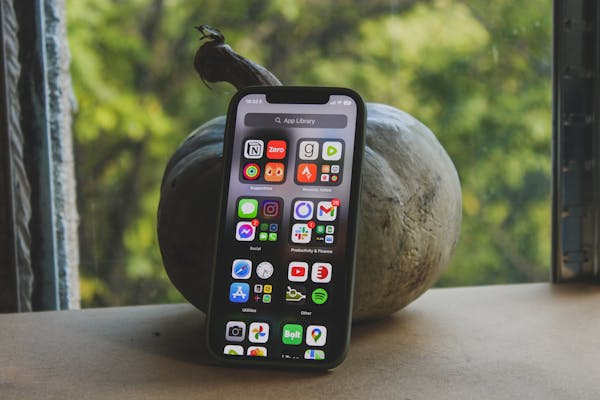In today’s fast-paced digital landscape, users expect seamless, high-performing mobile applications that deliver exceptional experiences. At Moobila, we specialize in crafting apps for iOS and Android that not only meet but also exceed these expectations. Our approach blends cutting-edge technology, best practices in software development, and a user-centric design philosophy to create mobile solutions that drive engagement and success.
Building high-performance mobile applications requires an in-depth understanding of various components, including architecture, API integration, UI/UX design, security measures, and ongoing optimization. In this article, we’ll take you under the hood to explore our approach and strategies for developing top-tier apps for iOS and Android that cater to modern user needs.
Understanding the Core of High-Performance Apps for iOS and Android
Performance is a critical factor in determining the success of any mobile application. A slow, laggy app can lead to frustration, uninstalls, and negative reviews. To ensure our apps for iOS and Android stand out, we focus on optimizing every aspect of development, from coding practices to backend infrastructure.
1. Choosing the Right Tech Stack
Selecting the right technology stack is crucial for building high-performance applications. We use:
- Swift and Objective-C for iOS apps
- Kotlin and Java for Android apps
- React Native and Flutter for cross-platform development
Each technology is chosen based on project requirements, ensuring optimal performance and maintainability. Native development provides superior performance, while cross-platform frameworks enable cost-effective solutions without compromising quality.
2. Optimized Code Architecture
Our developers follow robust architectural patterns such as:
- MVVM (Model-View-ViewModel)
- MVP (Model-View-Presenter)
- Clean Architecture
These patterns ensure code modularity, scalability, and ease of maintenance. By structuring the app properly, we improve code reusability, testing efficiency, and future scalability. Clean architecture, in particular, helps separate concerns and enhances the flexibility of our development process.
3. Efficient API Integration
High-performing apps for iOS and Android require seamless communication between the front-end and back-end. We implement:
- RESTful and GraphQL APIs for efficient data fetching
- Caching mechanisms to minimize server requests
- Asynchronous programming to prevent UI blocking
- Edge computing to process data closer to users for better response times
By optimizing data transmission and processing, we ensure that our apps provide users with real-time updates and responsive interactions.
4. Enhancing Speed and Responsiveness
To make our apps lightweight and fast, we employ various optimization techniques such as:
- Lazy loading: Loading content only when needed to reduce memory consumption
- Multithreading: Running tasks in the background to avoid UI lag
- Image optimization: Using formats like WebP to reduce load times
- Asset compression: Reducing the size of assets such as videos, fonts, and animations
- CDN (Content Delivery Network) usage: Accelerating content delivery by distributing it across multiple servers worldwide
These strategies enable us to develop applications that run smoothly across various devices, regardless of hardware specifications.
5. Robust Security Measures
Security is a top priority for us. Our security protocols include:
- End-to-end encryption to safeguard user data
- Secure authentication methods like OAuth, biometrics, and two-factor authentication (2FA)
- Regular security audits to identify vulnerabilities
- Data encryption both in transit and at rest
- OWASP Mobile Security testing to prevent common security threats
By implementing these best practices, we ensure that our apps for iOS and Android are safe from cyber threats and unauthorized access.
6. User-Centric UI/UX Design
A well-designed app is not just visually appealing but also enhances performance. We focus on:
- Adaptive layouts to support multiple screen sizes and orientations
- Minimalistic design for faster rendering and better user experience
- Smooth animations that do not impact performance
- Accessibility features to ensure inclusivity for all users
- Dark mode support to improve battery efficiency and reduce eye strain
The usability and responsiveness of an app directly impact user retention. That’s why we focus on an intuitive and enjoyable experience that makes users want to return to the app repeatedly.
7. Comprehensive Testing Strategies
Before launching any application, we rigorously test for:
- Performance issues like memory leaks, CPU usage, and response times
- Compatibility across different devices, screen resolutions, and operating systems
- Security vulnerabilities through penetration testing
- User behavior analytics to refine features based on real-world data
- Crash analytics and bug tracking to quickly identify and resolve issues
We utilize automated and manual testing techniques, ensuring that our apps are stable, responsive, and free from performance bottlenecks.
8. Continuous Monitoring and Updates
Post-launch, we continuously monitor app performance and user feedback using analytics tools. Our ongoing maintenance includes:
- Fixing bugs and security loopholes
- Introducing new features to keep the app engaging
- Optimizing performance based on real-time usage data
- Adapting to OS updates to ensure compatibility with new versions
Our approach ensures that our apps for iOS and Android remain relevant and competitive in an ever-evolving mobile landscape.
The Future of Apps for iOS and Android
As technology advances, we continuously evolve our strategies to build even more efficient apps for iOS and Android. Some of the upcoming trends that will shape mobile app development include:
- AI-driven features: Integrating artificial intelligence to enhance personalization and automation
- Augmented Reality (AR) & Virtual Reality (VR): Creating immersive user experiences for various industries, from gaming to e-commerce
- Cloud-based computing: Leveraging cloud storage and processing power to make apps lighter and more efficient
- 5G optimization: Enhancing speed and reducing latency for real-time applications
- IoT integration: Connecting mobile applications with smart devices for better automation and control
At Moobila, we are committed to staying ahead of the curve, ensuring that our clients receive top-notch mobile solutions tailored for the future.
Key Strategies for Building High-Performance Mobile Apps
| Category | Key Components | Description |
| Tech Stack Selection | Swift, Kotlin, Cross-Platform Frameworks (Flutter/React Native) | Native languages for platform-specific optimization + cross-platform tools for code reusability |
| Code Architecture | MVVM, MVP, Clean Architecture | Separation of concerns for easier maintenance and scalability |
| API Optimization | RESTful/GraphQL APIs, Caching Strategies, Async Processing (Coroutines/Rx) | Efficient data handling with flexible querying and background processing |
| Speed Enhancements | Lazy Loading, Multithreading, Image Compression (WebP/AVIF) | Resource optimization for faster load times and smooth UI rendering |
| Security Measures | AES-256 Encryption, OAuth2/SSO, Biometric Auth, Penetration Testing | End-to-end data protection with regular vulnerability assessments |
| UI/UX Optimization | Adaptive Layouts, Minimalist Design, 60fps Animations, Gesture Navigation | Platform-specific UI patterns with consistent performance across devices |
| Testing & Debugging | Unit/UI Tests, Device Farms, Security Scanners, Profiling Tools | Automated testing pipelines with real device validation and memory leak detection |
| Continuous Monitoring | Crash Analytics, Performance Metrics, A/B Testing, OTA Updates | Real-time user behavior tracking with hotfix deployment capabilities |
By following these strategies, Moobila ensures that its apps for iOS and Android deliver an unmatched user experience. Whether you’re a startup or an enterprise, our expertise can help turn your app vision into reality.
Summing it Up
Building high-performance apps for iOS and Android is a complex process that requires meticulous planning, execution, and continuous improvement. At Moobila, we leverage cutting-edge technology, robust architectures, and innovative design principles to create applications that deliver exceptional user experiences. By focusing on speed, security, scalability, and usability, we ensure that our apps meet the highest industry standards.
As mobile technology evolves, so do the expectations of users. Businesses must stay ahead by adopting the latest trends and best practices in app development. Whether you are looking to build a new mobile application or enhance an existing one, partnering with Moobila can help you achieve success in the competitive app market.



